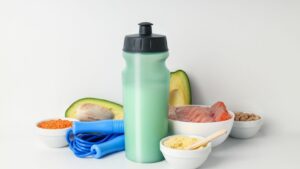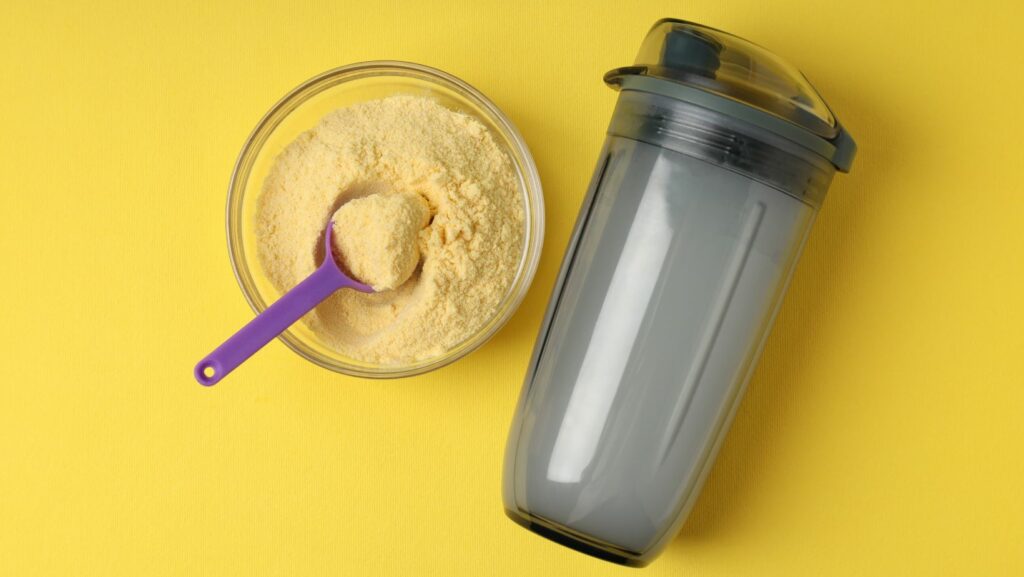Sports Nutrition Packaging
- Impact of Packaging: Effective sports nutrition packaging not only protects products but also plays a crucial role in attracting consumers and conveying essential product information.
- Sustainability Trends: Eco-friendly packaging solutions are increasingly important, with consumers favoring brands that prioritize recyclable and biodegradable materials.
- Functionality and User Convenience: Packaging must be user-friendly, with features like resealable bags and single-serve options that cater to active lifestyles, ensuring usability and convenience.
- Labeling Importance: Clear and informative labeling is essential for guiding consumer choices, detailing nutritional information, ingredients, and health benefits to enhance consumer satisfaction.
- Design Aesthetics: Eye-catching designs and unique shapes are vital for standing out in a crowded marketplace, influencing purchasing decisions significantly.
- Regulatory Compliance: Brands must navigate stringent packaging regulations and evolving consumer expectations to avoid penalties and ensure transparency in their packaging strategies.
In the fast-paced world of sports nutrition, packaging plays a crucial role in attracting consumers and conveying essential information. As athletes and fitness enthusiasts seek products that enhance performance and recovery, the packaging must not only stand out on the shelf but also communicate the benefits effectively.
From protein powders to energy bars, the right packaging can make a significant difference in consumer choice. It’s not just about aesthetics; functionality and sustainability are becoming increasingly important in this industry. As trends shift towards eco-friendly solutions, brands are rethinking their packaging strategies to meet the demands of a more environmentally conscious audience. Understanding these dynamics is vital for anyone looking to succeed in the competitive landscape of sports nutrition.
Overview of Sports Nutrition Packaging
Sports nutrition packaging serves multiple purposes, including safeguarding products, enhancing shelf life, and appealing to consumers. It incorporates various materials such as plastic, glass, and biodegradable options, catering to diverse market needs.
Sustainability is a major trend. Companies increasingly opt for recyclable materials, helping reduce environmental impact. Consumers favor brands that prioritize eco-friendly practices, creating a competitive edge for businesses utilizing sustainable packaging solutions. 
Labeling plays a crucial role in sports nutrition packaging. Clear, informative labels detail ingredients, nutritional information, and health benefits. Effective labeling enables consumers to make informed choices, contributing to their overall satisfaction.
Design aesthetics also significantly impact consumer behavior. Eye-catching colors and unique shapes attract attention on store shelves. Brands prioritize innovative designs to stand out in a crowded market, ultimately influencing purchasing decisions.
Functionality remains essential. Packaging must be user-friendly, easy to open, and convenient for on-the-go consumption. Features like resealable bags and portion-controlled servings enhance usability, aligning with active lifestyles.
Sports nutrition packaging combines sustainability, informative labeling, appealing design, and functionality. Companies that adapt to these elements can better meet consumer expectations and thrive in the evolving marketplace.
Importance of Packaging in Sports Nutrition
Packaging serves a crucial role in the sports nutrition industry by ensuring product integrity and enhancing consumer engagement. Effective packaging not only protects nutritional products but also communicates brand values and product benefits.
Functionality and Protection
Functionality and protection are vital attributes of sports nutrition packaging. Packaging materials like Mylar and HDPE provide barriers against moisture and oxygen, preserving product freshness and efficacy. Resealable bags and single-serve pouches improve convenience for active consumers, allowing them to carry nutrition on the go. Additionally, protective packaging reduces the risk of contamination and product damage during transit, ensuring that consumers receive products in optimal condition.
Branding and Consumer Appeal
Branding and consumer appeal hinge on striking a balance between aesthetics and information. Eye-catching designs with vibrant colors and engaging graphics attract attention on crowded shelves. Clear, informative labeling enhances transparency, allowing consumers to make educated choices based on ingredients, nutritional content, and usage instructions. Unique packaging shapes can create a memorable brand identity, fostering brand loyalty in a competitive market. Companies that incorporate sustainable materials further enhance appeal, aligning with consumer preferences for environmentally responsible products.
Types of Sports Nutrition Packaging
Sports nutrition packaging primarily falls into two categories: flexible packaging and rigid packaging. Both types serve distinct purposes, catering to the diverse needs of consumers and brands within the industry.
Flexible Packaging
Flexible packaging includes materials that can bend or conform to various shapes without breaking. This type of packaging often includes pouches, bags, and films. Key benefits include:
- Lightweight Design: Reduced transportation costs and less environmental impact due to lower material use.
- User-Friendly Features: Resealable pouches and tear notches enhance convenience for on-the-go consumers.
- Barrier Properties: Materials like Mylar and foil offer excellent protection against moisture and air, extending product shelf life.
- Print Versatility: High-quality printing options allow brands to showcase appealing designs and essential information effectively.
- Sustainability Options: Increasingly, brands use biodegradable and recyclable flexible materials to meet eco-conscious consumer demands.
Rigid Packaging
Rigid packaging consists of materials that maintain their shape and provide superior protection. Common forms include bottles, jars, and containers. Notable features include:
- Durability: Strong materials like glass and high-density polyethylene (HDPE) prevent breakage and contamination during transport.
- Shelf Appeal: Unique shapes and vivid colors enhance the visual appeal, drawing consumer attention on store shelves.
- Labeling Space: Larger surfaces allow for more detailed product information and branding opportunities.
- Content Integrity: Tighter sealing mechanisms help preserve nutritional content and prevent spoilage.
- Reusability: Some rigid containers encourage reuse, providing added value and aligning with sustainability efforts.
Understanding the characteristics of flexible and rigid packaging can help brands optimize their approach, meeting consumer expectations in the competitive sports nutrition market.
Innovations in Sports Nutrition Packaging
Innovations in sports nutrition packaging focus on enhancing sustainability and functionality while addressing consumer preferences. Brands are increasingly adopting advanced materials and technologies to create packaging that meets evolving market demands.
Sustainable Packaging Solutions
Sustainable packaging solutions play a vital role in the sports nutrition industry. Companies are integrating biodegradable materials, recycled content, and plant-based polymers into their packaging options. Examples include starch-based films and paper products that reduce environmental impact. Furthermore, brands are opting for minimalistic designs that eliminate excess plastic and use eco-friendly inks. These initiatives resonate with consumers who prioritize environmental responsibility, enhancing brand loyalty and market appeal.
Smart Packaging Technologies
Smart packaging technologies are emerging as significant innovations in sports nutrition packaging. Brands utilize QR codes and NFC (Near Field Communication) chips to connect consumers to digital content, including nutritional information and workout tips. These features facilitate transparency and foster brand-consumer engagement. Additionally, active packaging technologies, such as moisture-absorbing materials, help maintain product freshness, enhancing customer satisfaction. By incorporating these advancements, companies position their products as cutting-edge solutions for active lifestyles.
Challenges in Sports Nutrition Packaging
Sports nutrition packaging faces various challenges, particularly concerning regulations and compliance as well as evolving consumer expectations.
Regulations and Compliance
 Regulations dictate stringent requirements for packaging materials, labeling, and claims made by brands. Companies must navigate local, national, and international standards, which can vary significantly. Compliance with guidelines set by agencies like the FDA in the U.S. ensures that products do not mislead consumers about their nutritional benefits. Failure to comply can lead to significant penalties, product recalls, or damage to brand reputation. Furthermore, evolving regulations concerning sustainability and recyclability require brands to continuously adapt their packaging strategies. Adhering to these regulations involves thorough research and investment in legal expertise to avoid pitfalls.
Regulations dictate stringent requirements for packaging materials, labeling, and claims made by brands. Companies must navigate local, national, and international standards, which can vary significantly. Compliance with guidelines set by agencies like the FDA in the U.S. ensures that products do not mislead consumers about their nutritional benefits. Failure to comply can lead to significant penalties, product recalls, or damage to brand reputation. Furthermore, evolving regulations concerning sustainability and recyclability require brands to continuously adapt their packaging strategies. Adhering to these regulations involves thorough research and investment in legal expertise to avoid pitfalls.
Consumer Expectations
Consumer expectations are continually rising, with an emphasis on sustainability, convenience, and transparency. Customers increasingly prefer packaging that reflects eco-friendly practices, prompting brands to adopt recyclable or biodegradable materials. Brands must also focus on user-friendly packaging designs that cater to the active lifestyles of their consumers, such as resealable pouches that enhance convenience. Transparency in labeling is crucial, as consumers seek clear information about ingredients, nutritional benefits, and sourcing. Meeting these expectations demands innovation and continuous improvement in packaging solutions to stay competitive in the dynamic sports nutrition market.
Contribute to a hHealthier Planet
The evolution of sports nutrition packaging reflects the industry’s response to changing consumer preferences and environmental concerns. Brands that prioritize sustainability and functionality are likely to resonate with a more discerning audience. By employing innovative materials and smart technologies, companies can enhance user experience while maintaining product integrity.
As the market continues to grow, effective packaging will play a pivotal role in shaping brand perception and consumer loyalty. A thoughtful approach to design and materials can set brands apart in a competitive landscape. Embracing these trends will not only meet consumer expectations but also contribute to a healthier planet.

